Please click on this link to read Part 1
If the first part of our exciting West Coast tour was all about sampling the region’s exquisite food and wine, then the second part took us on thrilling ride filled with culture, adventure, nature and history!
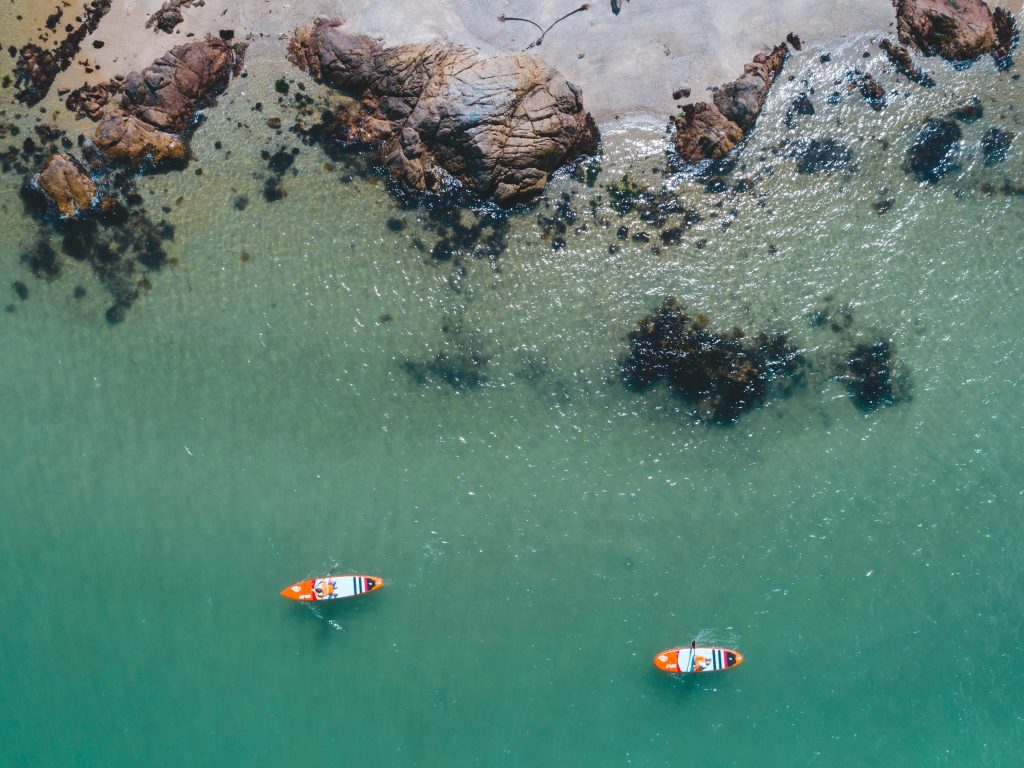
Image credit – DiscoverCTWC
9. !Khwa Ttu San
!Khwa Ttu – San Spirit Shared, located just an hour’s drive from Cape Town on a hilltop with sweeping ocean views, was to be our home for the night. If you would like to experience authentic interactions within a beautiful environment with walking and biking trails, San nature and culture tours and delicious home-cooked food (you must try the delectable Eland burger!), then this is the place for you. I had the pleasure of staying here on two previous occasions – once in the tented bush camp which is situated across the road from !Khwa Ttu, and once in the luxurious Guesthouse which is near to the restaurant and visitor centre.

Upon arrival, we were warmly greeted by the !Khwa Ttu team. I immediately recognized some of them. What’s really special is that they recognized me too and asked how my family and I are doing. We dropped Andrew and Shawn off at the self-contained, solar-powered Bush House which is tucked away in a peaceful spot on the coastal plains. Sleeping up to four people, it offers a sheltered patio and outdoor fireplace which is perfect for relaxing and listening to the sounds of nature. You can also enjoy walks to wetlands and bird hides which make it easy to explore the unique plants and animals of the area.

I was very fortunate to spend the night in the stunning Guesthouse where I had previously stayed. The views from up here are truly breathtaking and on a clear day, you can see majestic Table Mountain across the Atlantic Ocean.
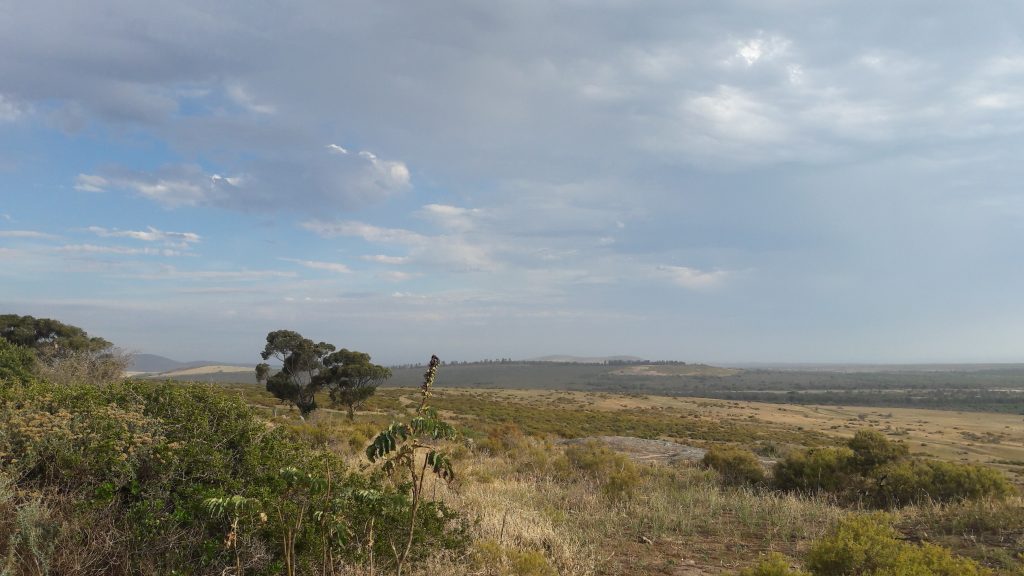
Views for days as seen from the Guesthouse at !Khwa Ttu.
A large tortoise decided to pop by to say hello before continuing on his journey. That evening, we were treated to a lekker (cool) South African braai (barbeque) with the setting sun creating a spectacular African sunset.

Ooof! How am I going to make it down this step?

African sunset magic …
The next morning we enjoyed a lovely breakfast, followed by an interesting talk about the different San groups and their languages, along with learning about the San tribes and culture. It’s quite fun trying to imitate the various clicks – there are some real tongue twisters there! A brand new and bigger Visitor Centre is currently under construction.
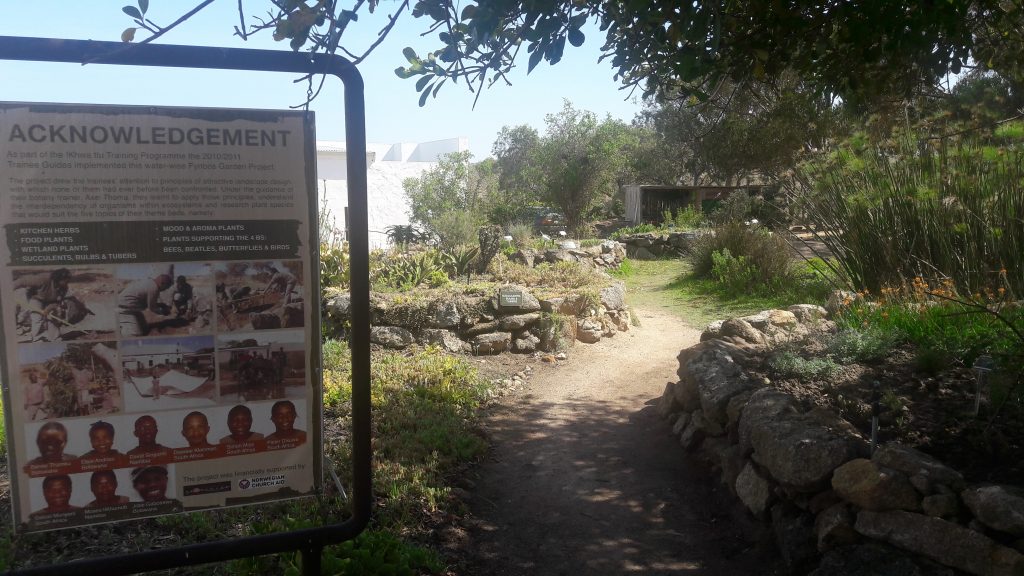
We headed outdoors for a fascinating tour and tea tasting through the landscaped water-wise Fynbos Garden filled with a range of fynbos, kitchen herbs, succulents, mood and aroma plants. They are passionate about responsible tourism and committed to conservation of biodiversity as well as a sustainable environment.

Image credit – DiscoverCTWC

Image credit – DiscoverCTWC
Did you know that through the mentorship and training project offered,
!Khwa Ttu educates and skills up to 30 San annually? This benefits around 150 dependents from remote communities in Botswana, Namibia and South Africa.
Then it was time to hop on the back of an open-air tractor trailer through the fields to a replica of a typical San village. Along the way, we spotted a herd of beautiful zebra. Once at the village, we were shown some of the traditional San hunting equipment, clothing and accessories.


Image credit – DiscoverCTWC
10. West Coast National Park
Time to head back and on to our next destination – West Coast National Park for an adventure with a difference! This National Park (about 36 000 hectares) is one of my favourites and it’s easy to see why. Famed for the glorious display of Spring flowers during the August and September flower season, this magnificent Park offers so much more to the visitor and is a year round destination. Experience the wonders of the magical Langebaan lagoon (I can easily spend hours staring at the azure waters), rare fynbos, hiking trails, cycling trails, internationally acclaimed wetlands, sandy dunes, the crashing waves of the Atlantic Ocean and countless varieties of animals and birdlife.

There is also much history to be discovered in the Park, such as Eve’s Footprints. A replica of this can be seen at the Geelbek Visitor’s Centre. The fossilised footprints are thought to have belonged to a young woman who lived alongside the lagoon some 117 000 years ago. The original footprints can be found at the Iziko South African Museum in Cape Town.
11. Cape Lion E-Ride Tour – West Coast National Park
We headed towards Geelbek Restaurant for our first adventure – an E-bike experience with Cape Lion E-Rides. What a spread we had waiting for us! Route 27 treated us to a delicious array of roosterkoek with yummy fillings, as well as fresh strawberries, biltong and dry wors.
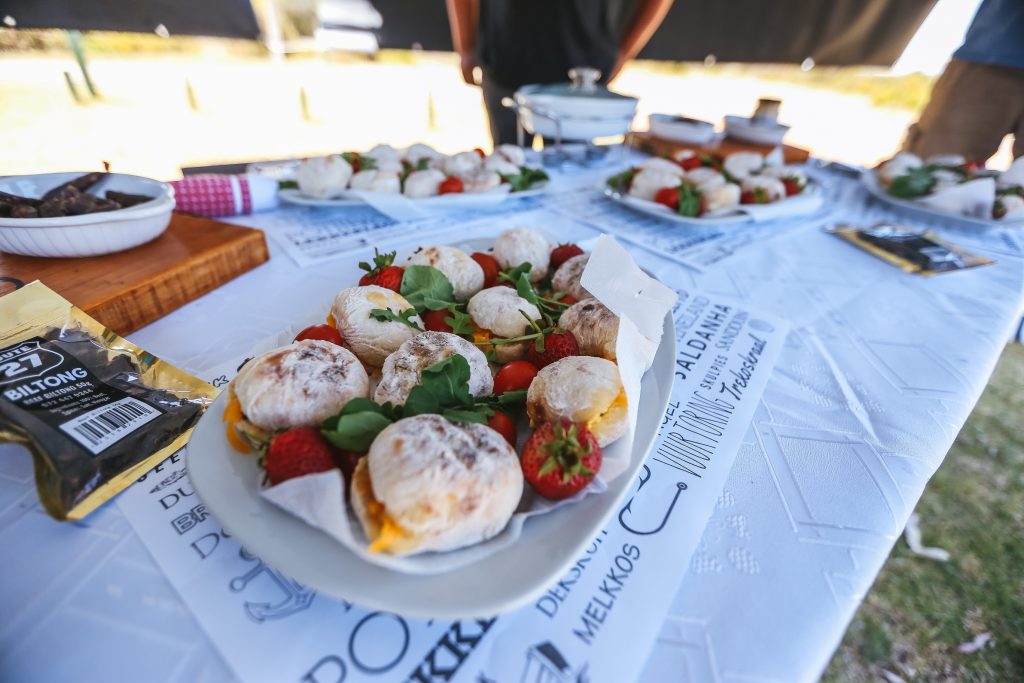
Image credit – DiscoverCTWC
I was soon to find out that filling our tummies before our ride was a very good idea. You can find Route 27 on the R27 West Coast Road at the popular Vygevallei Padstal (farm stall).
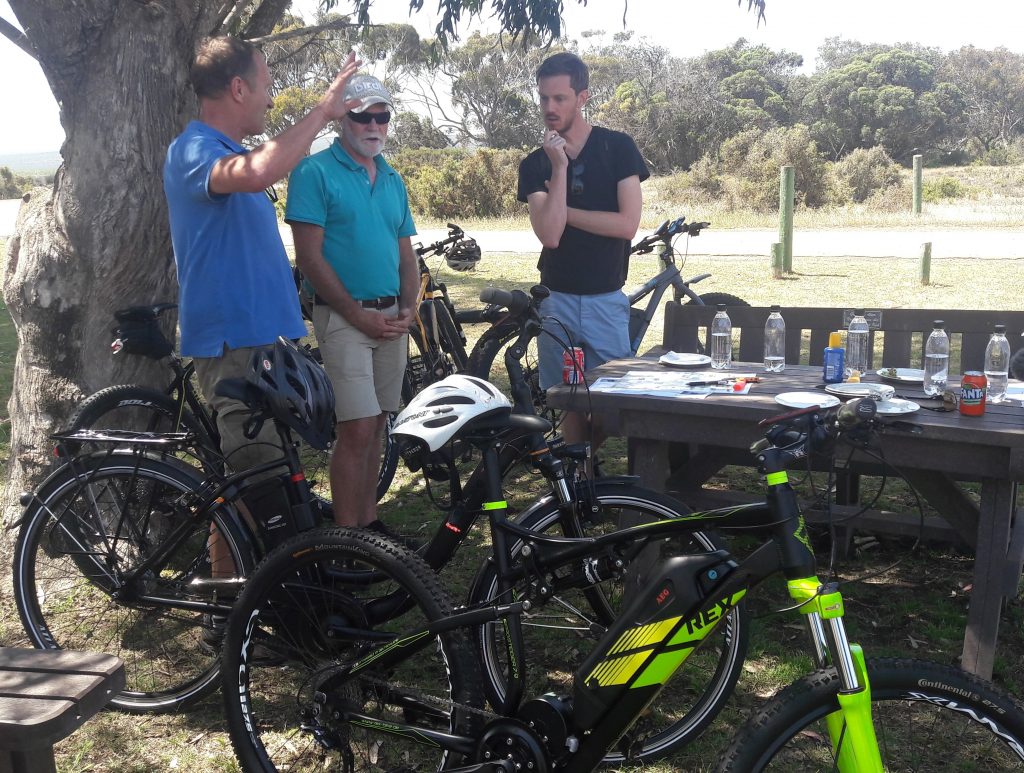
Peter Galloway, along with his business partners Christoph and Robin, explained how each E-bike works and how to get the most out of our approximately 23km ride! Say what? When I heard that I thought there is just no way that I would ever be able to go the distance. But, that’s where the beauty of an E-bike lies. Without getting too technical, this is how the E-bike works according to Cape Lion E-Rides.
“It is powered by AEG’s mid-drive motors and you as the rider get to choose the selected pedal power output assistance to climb any steep hill. The maximum assisted speed is 25km. A range of 120km-180km can be achieved depending on the rider and conditions before the Samsung SDI lithium Ion battery is recharged.”
And there is no need to worry about safety as they are engineered and built to German standards and EU certified for safety, reliability and comfort. What I also love is that they embrace responsible travel and tourism – travelling to natural areas to conserve the environment and sustain the well-being of the local people.

Feeling like a kid again with my trusty steed 🙂
I hadn’t ridden an E-bike before but as the saying goes – it’s like riding a bike! Before I knew it, we were whizzing along the Park’s roads (there is always a safety vehicle following behind the riders on E-bike tours) and taking in the spectacular West Coast landscape of fynbos, small wildlife and the turquoise blue of the Langebaan lagoon and the ocean beyond. The views are just incredible.

Image credit – DiscoverCTWC
We had a few short stops here and there but I barely broke a sweat throughout the ride. That’s how easy it is. Only when we were told that we were to ride up a hill on a gravel track to the Seeberg Viewpoint was I a bit skeptical. But since an E-bike isn’t a regular bike, it proved to be a breeze. And the ride up there was well worth it as the vistas are spectacular.

All too soon, it was time to depart and make our way to the Langebaan Gate. I simply waved at the guys and jokingly said goodbye. You see, I had plans to just keep on riding my E-bike out of there and not turn back. Check out their website for more info about the E-bikes and the tours they offer in and around Cape Town. Would I do it again? Absolutely yes! I can highly recommend an E-bike tour with Cape Lion E-Rides.
12. Windtown Lagoon Hotel – Langebaan
The picturesque town of Langebaan on the shores of the Langebaan Lagoon is a kitesurfers paradise and where you’ll find the trendy Windtown Lagoon Hotel.
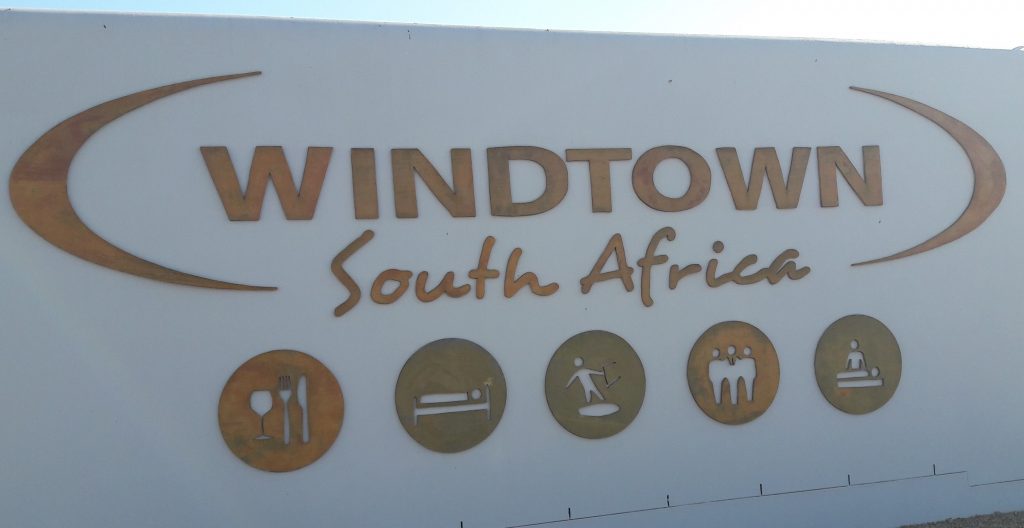
Frequented by kitesurfers and other adventurers, the hotel offers exclusive accommodation with a laid-back feel throughout. Located about 150m from the beach and beautiful lagoon, it’s the perfect spot for your getaway. There is an on-site restaurant, bar and spa with the swimming pool and deck as the focal point.

The kite school and centre is conveniently situated beside the hotel. The rooms are situated on two levels and all have a pool view. The decor is modern with swanky South African touches. The hotel is very conscious of the severe water crisis in the Western Cape and there are signs in the bathrooms advising guests of the situation. You can also order a water saving kit from their friendly staff.

Dinner was a delight at their restaurant Breeze – fresh and tasty SASSI green-listed Yellowtail with sweet potato fries and vegetables, followed by a melt-in-your-mouth Chocolate Fondant and vanilla ice-cream. Andrew and Shawn both opted for the Lamb Curry and declared it delicious.
13. Time to SUP!
After a peaceful night’s sleep (the bed and pillows are so comfy) and breakfast, we set out to the lagoon with Adam from the kite centre. Today’s activity was one that I had never tried before – Stand Up Paddle Boarding (SUP). I was happy to see that the lagoon waters were fairly calm as I wasn’t quite sure how I would manage to stay on the board, never mind stand up and paddle.

Adam makes packing the jeep with SUPs look like a breeze!
It took me awhile to get used to paddling in the right direction (kept going round in circles for a while!) and not falling in the water, but once I got a feel for it and maintained my balance, I was able to get up from my knees very slowly into a standing position – success! Andrew managed it far quicker than I did while Shawn stayed on dry land and shot some stunning aerial drone footage. It’s so peaceful out on the water and an amazing full body workout.

Adam is really patient and great at giving advice. Being a professional and an expert at SUPing, he made it look super easy. I didn’t think I’d be able to do it, but I did and had such fun. It isn’t all that hard once you get the hang of it. Once we reached the beach, we headed back to the hotel. I lagged behind the other two as my legs were shaking like jelly! Whether you’re into kite surfing, windsurfing or sailing, or you’d like to learn how to do these activities, Windtown Lagoon Hotel is the place to stay.
14. West Coast Fossil Park – Vredenburg
Our West Coast tour was soon coming to an end, but not before a visit to the West Coast Fossil Park. Heading inland, we soon arrived at the Visitors Centre and were shown around the various rooms and lab by Wendy. She heads up the Public Programmes Unit and is incredibly passionate about educating the public about the West Coast when it was a wild area. Some five million years ago, exotic animals such as bears, sabre-tooth cats and short-necked giraffes roamed freely.

Today, we can see the fossils at the Visitors Centre, along with fascinating dig sites. She also showed us where the new Visitors Centre was and gave us a behind-the-scenes look at this large, modern and fully sustainable building (no photos were allowed to be taken inside the building).

The Park is now operating from the new Visitors Centre (funded by the National Lottery). Refreshments can be purchased from the new Restaurant, and the Gift Shop and Tuck Shop have also been re-located to the new Reception area. Unfortunately, the new Exhibitions building is NOT yet open. Having seen them partially completed, it’s going to be a very popular feature when they do open.

Wendy took us on a short walking tour of the dig sites. Children and adults alike will be astounded when they see fossils in the ground exactly as they were buried about five million years ago and amazingly, exactly as they have been carefully uncovered by the research teams. This is one of the few places in the world where you can view such fossils.


15. West Coast Oyster Growers – Saldanha Bay
I was particularly excited about our final stop as we headed to Saldanha Bay to see how oysters are grown – I absolutely LOVE eating oysters! I know they’re not everyone’s cup of tea, but I would eat them just about every day if I could.
As we were short on time, we missed out on the boat ride to the oyster farms a short distance from the factory, West Coast Oyster Growers. During the factory tour, we were told about the oyster life cycle, starting as an oyster spat (seed), being planted at sea in the plankton-rich waters brought in from the cold Benguela current, all the way to being harvested and cleaned and graded. An adult oyster takes between one and two years to reach market size.
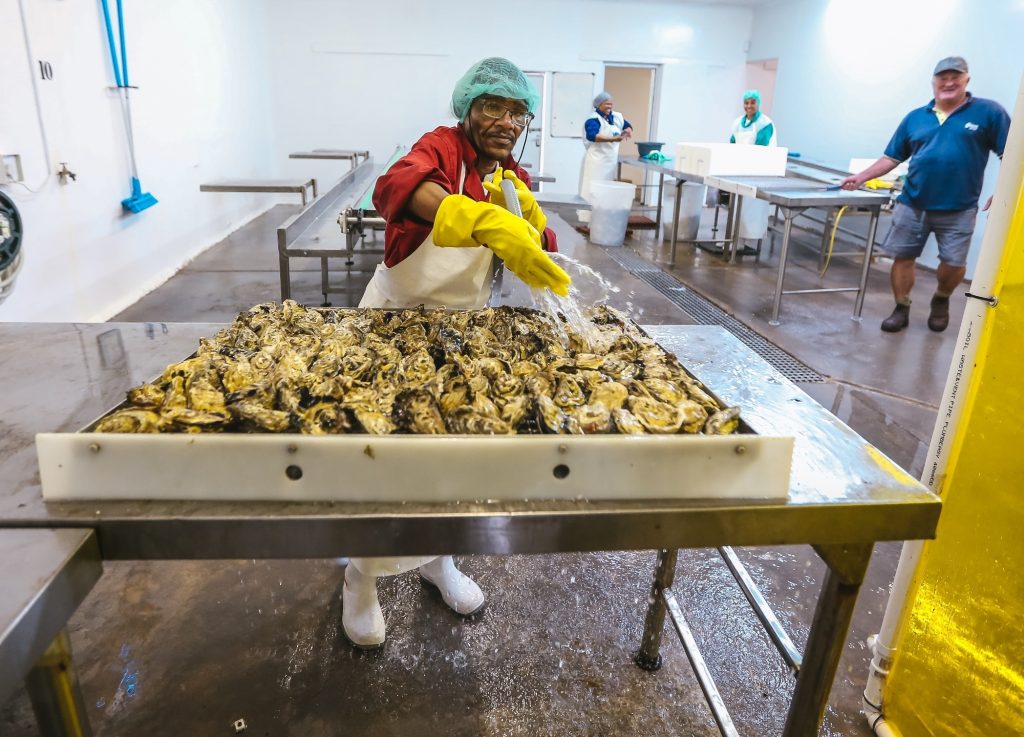
Image credit – DiscoverCTWC
And because they are grown in unpolluted plankton-rich waters, Saldanha Bay is the perfect breeding ground for them and the reason they are uniquely sweet, plump world-class oysters. I didn’t have to be asked twice if I wanted to taste some and I happily devoured two or three of these luscious creatures. They were unlike any other oysters I’d tasted – it doesn’t get fresher or tastier then this! And they are a sustainable source of seafood.

Just look at those delicious beauties!
The West Coast (Weskus) has five extremely diverse regions with their own unique attractions. We explored just some of the many activities and scenic areas within the Swartland and Peninsula regions. With so much to see and do, one could easily spend a few weeks exploring all five regions within the Cape West Coast.

Fortunately, much of the West Coast can be reached within a few hours drive from Cape Town. So there really is no excuse not to visit. Local is definitely lekker, so become a traveller within your own country and explore your “backyard”. And if you’re a foreign visitor that hasn’t been to South Africa yet, start planning your itinerary now and make sure to include the wonders of the West Coast!
Please note ~ I was hosted throughout by DiscoverCTWC (Discover Cape Town & Western Cape). All views and images are my own unless otherwise indicated.




What a wonderful experience. I have been to IKwatthu and done the San Experience and discovered the clicks in the language myself. I love the West Coast National Park and try to visit every year in flower season. You have brought so many other places to life here that’s it’s time to go back and explore further. Thank you.
Hi JetSet, it’s great to hear that you have experienced some of the activities yourself and enjoyed them. South Africa is so unique and diverse with lots to offer every kind of traveller. I’m so glad to hear that you enjoyed the post and that you want to go back for more exploration! Have fun and enjoy it when you do go 🙂